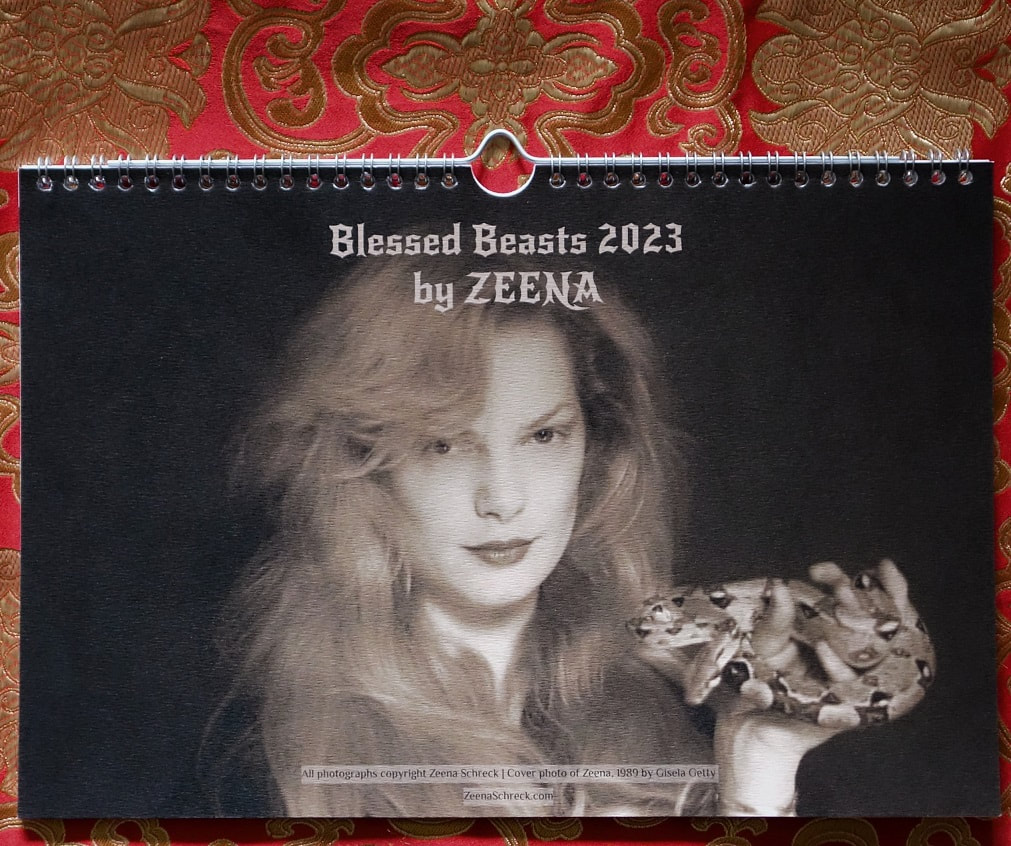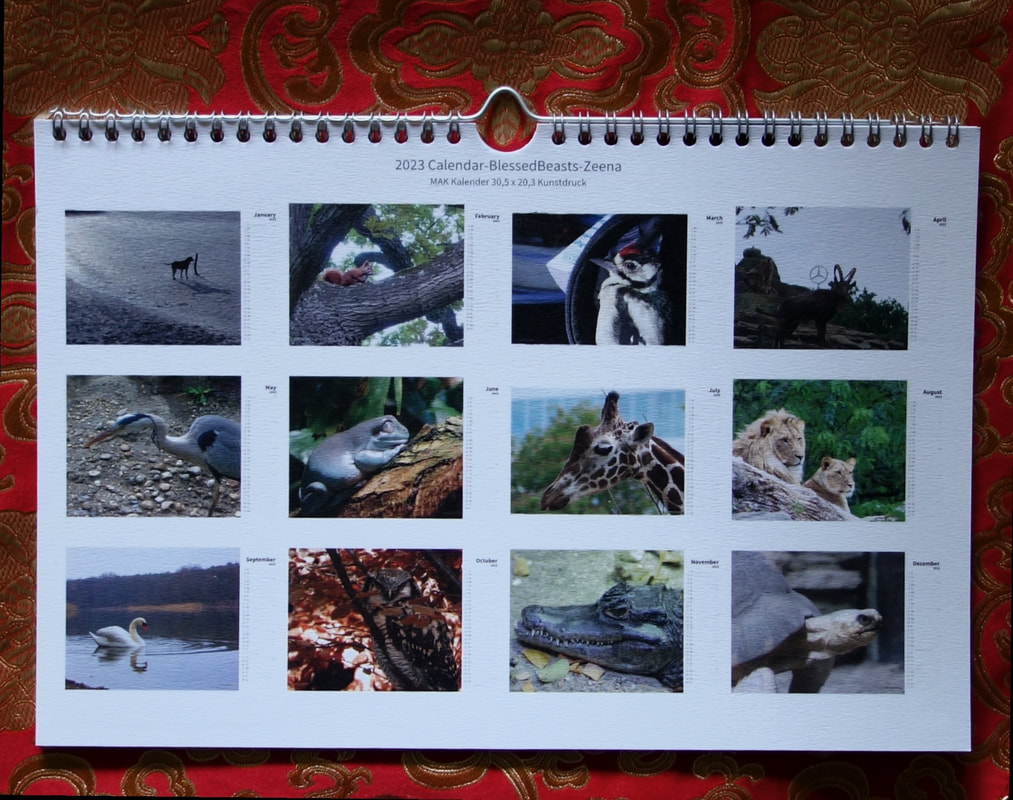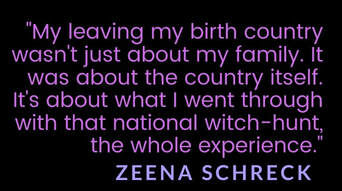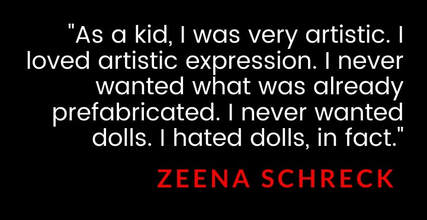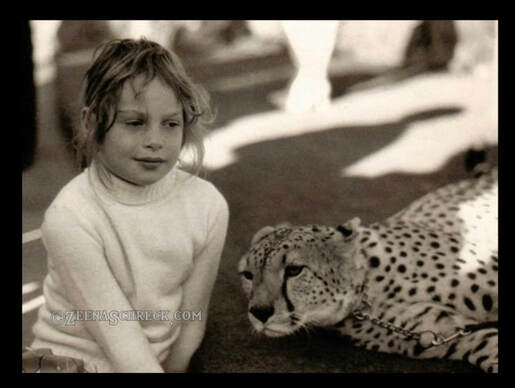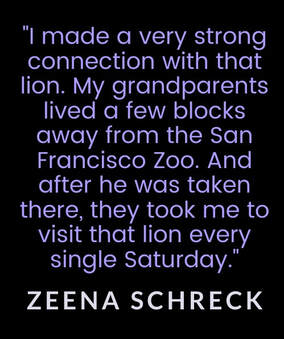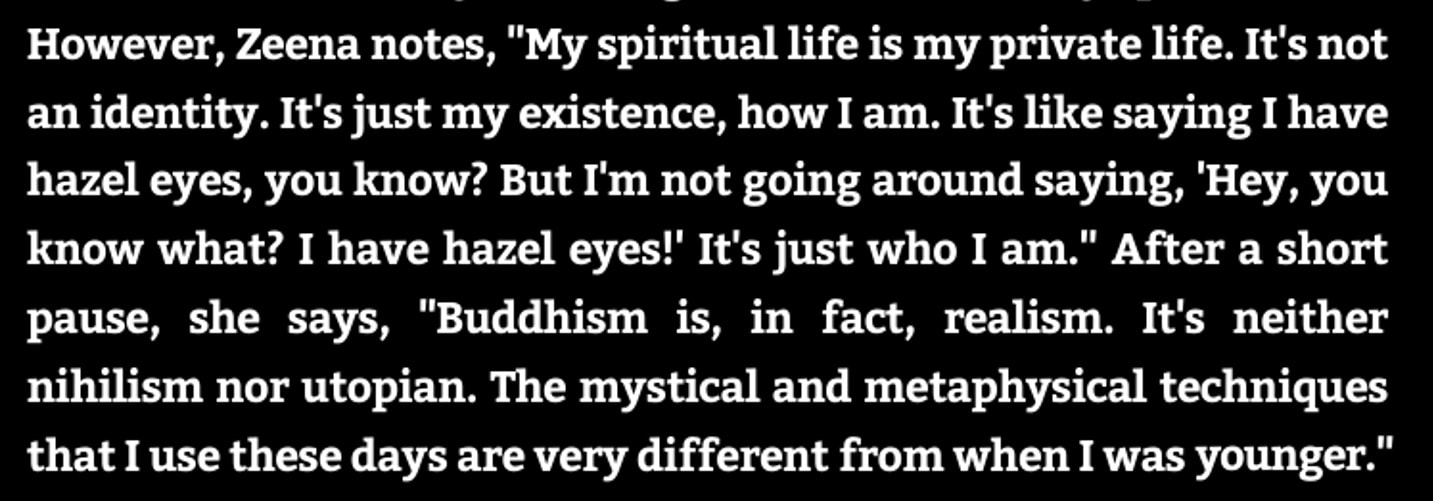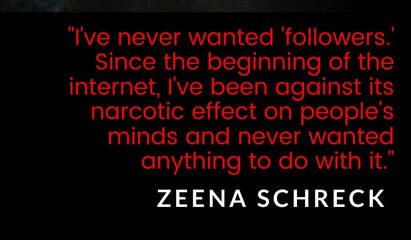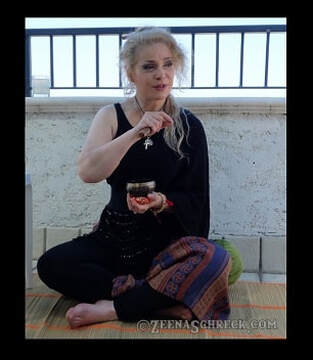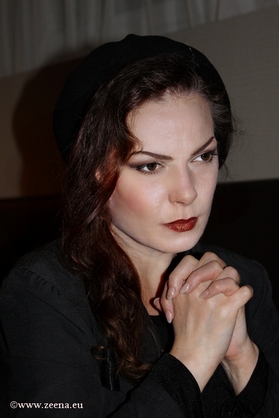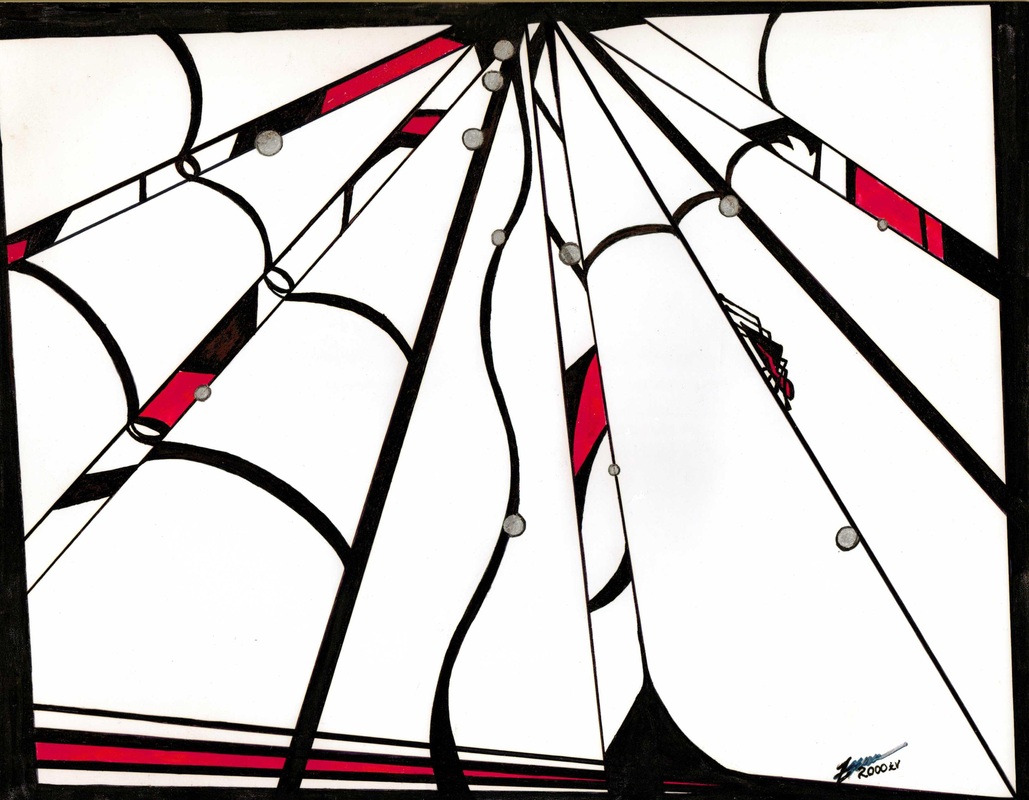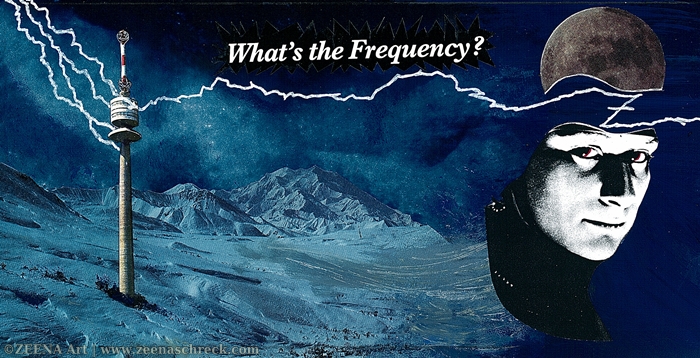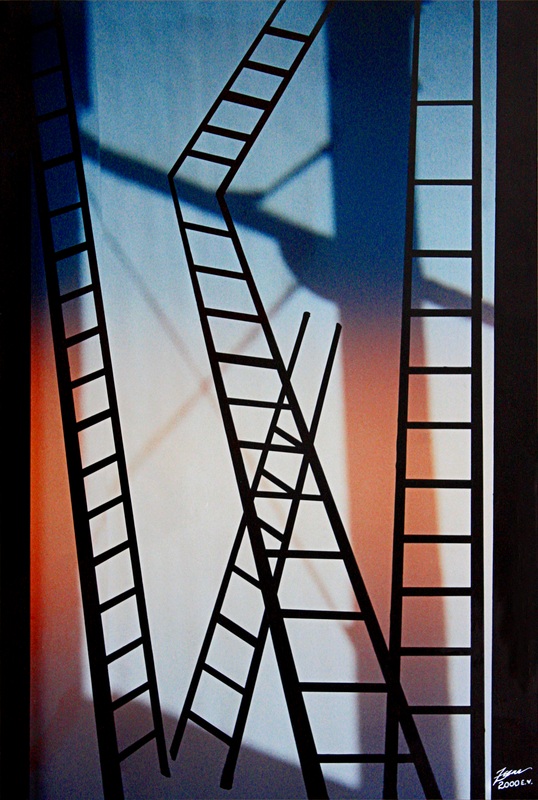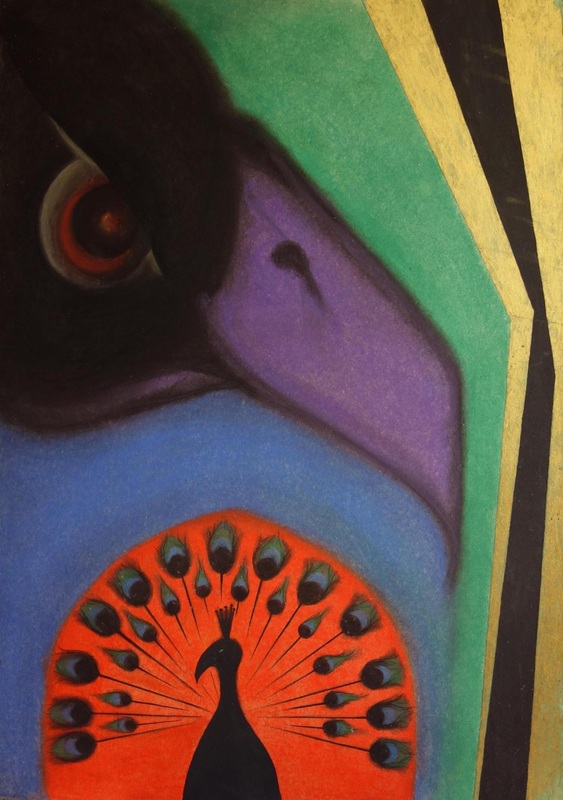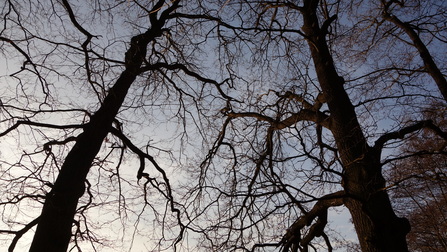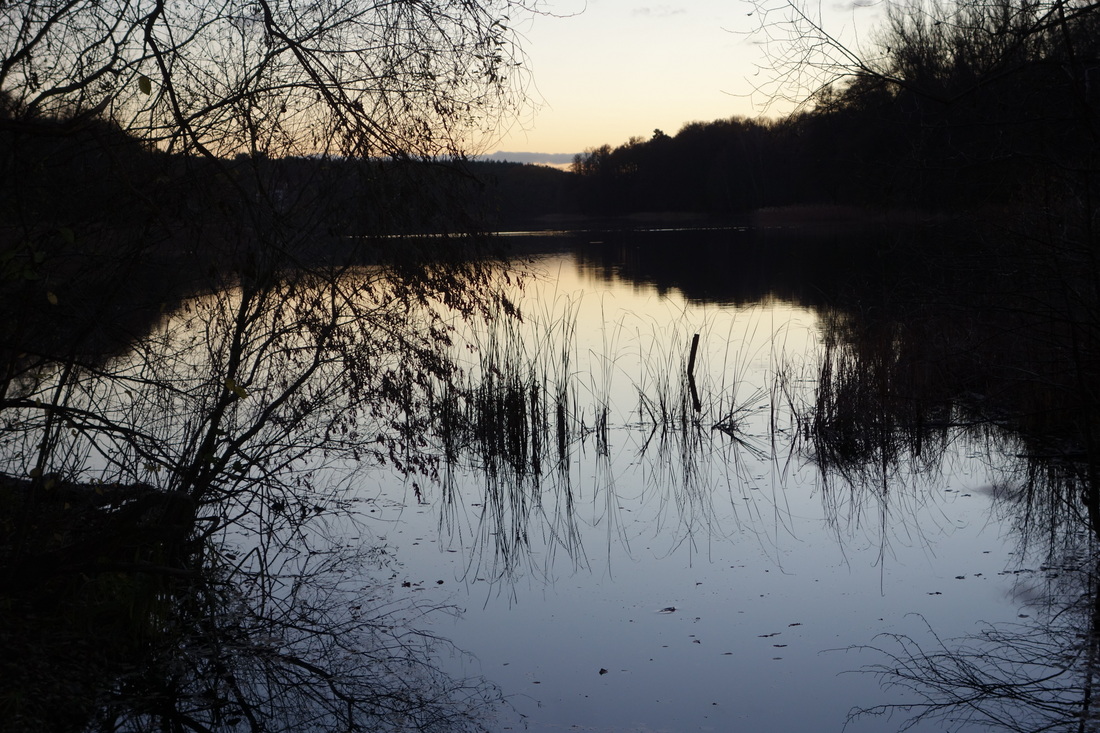Blessed Beasts 2023 Fine Art Calendar By ZeenaFor World Animal Month coming in October: Zeena honors our non-human totems, familiars, spirit guides and animal companions in a limited edition 2023 fine art calendar. Vibrant original works photographed by Zeena for monthly contemplations on animal wisdom, welfare, rights and liberation. A celebration and appreciation for the magical and spiritual bonds between all species of sentient beings. Personalized autograph option located in the drop-down menu.*
(*If you have animal companions for which you'd like Zeena's personalized blessings - as well as for yourself - simply send your and/or the animals names to [email protected] to be added in the calendar inscription.) -ORDER HERE- About the paper: *All images are printed with classic look on Hahnemühle photo art print paper. *High quality inkjet printing process. *Paper surface is fine matte and textured. *Weight of 250 g/m² *Dimensions: 300x200mm / 8”x11½” *Suitable for cropping and framing after use.
3 Comments
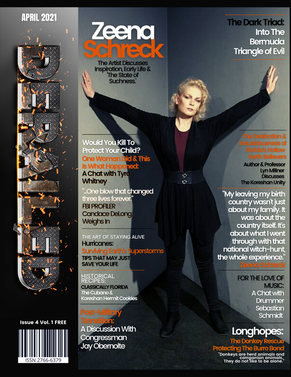 Zeena Cover Story in Derailed Magazine: Since the publication of this extra-long interview with Zeena for Derailed Magazine, many have requested to read it in a more user-friendly format. Specifically, some found the version on the Derailed website difficult to open and navigate to read all the way through whereas some non-native English speakers expressed that they would have liked a way to read the text through translation apps. For those reasons, we're archiving the complete interview text below in this post. The original full color hardcopy of the magazine (containing visuals not included in this post) is available at: https://www.derailedmagazine.com/april-2021 Many thanks to Daphne Minks Daly at Derailed Magazine for facilitating this in-depth, exclusive interview with Zeena! [Posted by Thomas] Eager Student, Humble Teacher Issue 4, Vol 1 April 2021 Words by Daphne Minks Daly. All Images copyright Zeena Schreck. Zeena Schreck has held many titles, avant-garde artist, musician, author, spiritual leader, and High Priestess, to name a few. These days, professionally, she's simply called ZEENA. Of all the monikers she's donned, the one that is truly her most beloved is, of course, that of yogi, or in its feminine form, a yogini. She states, "My life has taken a turn. One where I'm 'becoming.' I'm a yogi that lives out in the forest. I live a solitary existence. And that's somewhat necessary for the kind of spiritual path that I'm on." Her private existence makes penetrating Zeena's inner circle a difficult but not impossible task. These days, she's kept well-insulated from outsiders, and it's of little wonder why. In the eighties, her father's religious organization was the center of controversy and a worldwide media nightmare, thrusting her already highly publicized family further into the spotlight. Ultimately, at her father's behest, Zeena publicly took up for him and his organization, taking the heat for both while becoming its first public spokesperson. Although she resigned from her role and severed ties with her father in 1990, many people still mistakenly associate her with events leftover from decades ago. In many ways, the shadows of her past will always be there. In other ways, they're all but a faded memory. Her childhood house, which once stood in San Francisco, California, was demolished in 2001. Known globally as The Black House, the building was, for many, a symbol of opposition and religious freedom. For others, blasphemy, fear, and hatred. But, despite the controversy, for Zeena, it was just home. Refusing correspondence that addresses her by previous surnames or titles, she has done her best to distance herself from her former identity. A permanent resident of Germany for well over two decades, Zeena says, "My leaving my birth country wasn't just about my family. It was about the country itself. It's about what I went through with that national witch-hunt, the whole experience." The former High Priestess affirms, "In the eighties, there were so many factors that came together, that caused good reason to travel a very extreme distance. My mind was made up. And that was it, I just had to get away. And sometimes you have to go very, very far away in order to get your life and head together." Zeena thoughtfully explains, "I often compare that experience to a branch on a tree. The tree, representing the family, maybe has root rot and it's beginning to reach up through the trunk of the tree as it's growing. The root rot is beginning to infest with parasites and it's actually toxic and rotten. Yet, there are a couple of branches, maybe close to the top or sticking out at the side, that the root rot hasn't reached fully. It's getting close, but if you can snip them off and replant them maybe they've still got enough life in them that the toxic effect hasn't reached them completely." Continuing, she says, "Snip it off, replant it, get it into healthy soil with some sunlight and nutrients. Then that branch of the tree can grow and get healthy. But first, it has to be separated from the rot. I feel that about my life here in Europe, that I returned home. That I actually was in the wrong place before." Her artwork speaks to an old soul with an appreciation for German romanticism. Stating that her inspiration comes from a comfortability with solitude and vivid imagination skills, Zeena shares, "As a kid, I was very artistic. I loved artistic expression. I never wanted what was already prefabricated. I never wanted dolls. I hated dolls, in fact." She remarks, "What I really wanted was art supplies. Or... and this may sound weird, but things that were just for 'survival.' One year, I asked for an icebox so I could keep food in my room, to begin learning how to live on my own. I wanted to know how to be utterly, utterly self-sufficient." I wondered about her childhood and how growing up in The Black House may translate to her art. "Was I ever a child?" Zeena sarcastically asks herself before responding. "I was left for pretty much the whole day, everyday. My sister would be in school and my parents slept through the day. I developed the necessity, but also the ability...well, I mean, I had no other choice than for my imagination and mind to expand," she explains. Pondering for a moment, Zeena recalls, "Because they slept all day, my mother would leave my breakfast on a chair next to the crib so when I woke up, I could reach out and take it. She used to brag to her friends, 'Oh, Zeena! She's like a little monkey. I have her so well trained, she can feed herself.'" Clarifying, she says, "My parents were not 'kids' kind of parents, you know? I didn't really spend a bunch of fun time with them, unless it was my birthday, or a holiday or some other reason. Otherwise, I was very much left to my own devices. I developed the ability to entertain myself." Zeena remarks, "My mother didn't know what I was interested in. She was just working all the time. I would only associate quality time with her after a big blowup between my parents." Her father, she explains, contributed to her interest in art and music a great deal. "In my earliest life, he definitely spent more quality time with me than my mother, with things that interested me. He would play music or after dinner he'd sometimes draw with me and teach me about classical art and music. He hated rock and metal music and gave long diatribes about how stupid it was. So, I was raised with very traditional musical influences. My father's original profession was musician. That's what's written on my birth certificate, as his profession. That's what he did back then," she says, her voice softening. Zeena then remarks, "I started reading fairly early, thanks to my grandmother. Every weekend, when I went to their house, she would get me a new book from that series, Little Golden Books. The fairy tale books that I was reading, my mind would wander and kind of discover alternate realities." She finishes her thought by sharing, "In my earliest life, my grandparents were that little bit of stability in my life. Because they led a 'normal, regular life.' There were a lot of changes that happened very rapidly throughout those early years. In my life, in my family, and in my household." When I ask about her experiences attending school, Zeena's gentle but nervous laugh makes another appearance. She replies, "For the longest time, for the life of me, I could never remember my first day of school. But, when I was dealing with issues after leaving my family, I learned some self-hypnosis techniques. I began uncovering a lot of just very mundane, ordinary memories. One of the things I realized was why I couldn't remember my first day of school. It's because I didn't go." Zeena explains, "My mother wasn't aware that school had started. So, I started late. I'm pretty sure it was a couple of weeks late." She goes on to say, "I spent so much time alone and was not socialized very early in life. It was a big problem when I started school. I was a little like a wild animal. I didn't really know how to behave for school." Recalling her first day at school, she describes, "All the other kids were already well-trained. The teacher said, 'We're going to get graham crackers before we take a nap.' And everybody got into 'formation,' to get their crackers. I didn't know the concept of science fiction, but it was all just weird!" she laughs. "When the teacher said, 'It's time to take a nap with your head down on the desk,' I wouldn't put my head down. I thought, 'I want to go outside and play!" She points out, "Of course, given the philosophy that I was raised with...that my parents made clear in interviews, and this is their words, by the way, they raised me 'by the laws of the jungle.'" She explains further, "I was able to be very independent and of course, that made my parents very happy - less work for them. I always kept to myself. I was always a loner. Unfortunately, that made me easy prey to be picked on and taken advantage of in a lot of ways. So, I learned how to fight early too," Zeena says. "Most of my life I hated school, but it wasn't that I hated learning. It wasn't that I didn't like my teachers. It was just...the problems I had in school because of my parents' notoriety, definitely caused serious problems for me. So, I took the GED to get out early," she shares. Zeena details, "It wasn't until much later in life that I could unravel how much of my behavior was a reaction to the way I was treated by other kids, and societal influences. And how much was inherent to my natural character." She discloses, "I've always had one or two very close friends, and I'm still that way, actually. I was never one of these girls that had a gang of girls they hung out with or some club at school that was their own clique." She expands by saying, "The only places I can recall that I felt safe was with a favorite uncle and two particular friends in my neighborhood. I always used to wish that they would just adopt me." With a childlike chuckle, she elaborates, "I was the stray dog at their door at dinner time. Like, 'Can I just kinda hang out here for a while?" About her childhood friends, she shares, "Their parents were kind enough to give me a little refuge, some shelter, even if just for a few hours, it was enough for me to get a breather." Taking a more serious tone, Zeena says, "Although I, myself was not a victim of parental physical abuse, there are many studies showing the effects of domestic violence between parents on the children." The artist emphasizes, "Even if the children are not being physically beaten themselves, it's just as damaging. Because they're living in a constant state of anxiety, of never knowing when something's going to blow up or where they stand. The stability of the household is totally shot." In the early years, death threats, nightly vandalism, stalkers waiting outside of the home, and hate mail were common occurrences due to her parents' notoriety. Zeena highlights, "In my case, I not only had violence in the household but violence outside of the household as well. I really had nowhere peaceful." "I used to feel like a lone wolf or a jungle cat that must fend for itself, like a jaguar," Zeena details. "I had a very strong connection to animals and still do obviously. My connection to other humans was far weaker. It probably still is," Zeena admits. "I so identified with animals. As I said, I was not socialized when I was a kid. But we did have a lot of animals and I was really tightly linked to them. Not only to our animals but to all animals." Her family's various exotic pets were also the source of another much-publicized debate. Most of the focus was placed on the family's pet lion, Togare. Zeena remembers, "I made a very strong connection with that lion. My grandparents lived a few blocks away from the San Francisco Zoo. And after he was taken there, they took me to visit that lion every single Saturday." She maintains, "I came to know Togare better than my parents did, after so many years," recalling, "My parents just dropped him there. They never went back to visit him. So, I was visiting regularly, making a shamanic connection. He was my brother. We were both just show-things in my parents world." The avowed vegan and animal rights advocate quickly points out that she doesn't condone keeping wild animals as personal pets. Expounding on her connection to animals and how it relates to her Tibetan Buddhist practices, a distinct sound of joy lifts in her voice. Zeena explains, "Part of what I teach is healing practices for people's animals." She says, "I really enjoy being able to guide people through certain spiritual practices, who maybe have an elderly or sickly animal. Or if they've just gotten a new baby animal, I teach how to do certain strengthening and longevity practices. Even choosing a name that will be beneficial to the animal is something Buddhism places emphasis on." Zeena remarks, "I happen to like all creatures, too, even insects that I've never seen before that are kind of creepy looking. I'll have a curiosity and think, 'Wow, that's neat. I wonder what it's thinking right now.' I try to look them in the eye and relate to them on their level." With a tender laugh, she says, "Some people don't respond too favorably when they see that you like singing to an insect, thinking you're a little buggy yourself." She goes on to explain, "Of course, I know the bug doesn't speak English. But you know what? I also know that if you're in a foreign country and you don't understand the language, but someone's genuinely kind to you, you're going to understand it. You don't need to speak their language." Zeena shares, "So often, I hear people coming to me saying, 'I'm so lonely.' Especially in these times, with coronavirus, lockdowns, and everything. People are so lonely. Depression and mental illnesses are getting worse because of isolation. I always try to remind them that if they open their mind up to all the life forms around them, visible and non-visible, it's literally impossible to be lonely." She kindly points out, "There are so many small life forms that you could be devoting your attention to, which could benefit from your positive attention. Just as you're feeling lonely, wishing someone would give you attention, so does that dog sitting next to you, or a spider in your kitchen!" Zeena suggests, "Just talk to them like a normal person talking to another person. They'll feel your intention. They'll feel your kindness. And that whole process transforms you, then you don't feel so lonely." As a yogini, Zeena instructs students privately, teaching Buddhist philosophy, rituals, meditation, and magic techniques. On a secular level, she offers private life-coaching and spiritual-based counseling to anyone of any religion. Offering lectures, seminars, and workshops to the general public, she believes in the importance of continually learning and challenging the mind. Zeena frequently partakes in solitary Buddhist retreats to expand, deepen and master her own practices. "I've been teaching since I was 16 years old. Metaphysics and magical sorcery when I was younger. Not so much sorcery anymore," Zeena clarifies, "but teaching spiritual practices and meditation for a very long time." She describes, "The core of my life is maintaining my spiritual practices. Like the hub of a wheel, from which everything else in life expands like the spokes." Zeena confesses, "Partly my biggest challenge these days, with my own spiritual practices, is compassion for humans. What I mean by that is, to have compassion for humans but not for their disruptive behavior. That is the important distinction." I then inquired about her path toward Buddhism. I wondered what it was that drew her to its time-honored traditions. She replied, "For me, it was the result of several personal tests that I had to go through. My life was changing in such a way that I really needed some spiritual direction of a metaphysical type." "I was not interested in psychotherapy. I explored that earlier in life. It was as good as it could have been for the people who were providing it," she explains. "But, you know, it just didn't work for me. It was not my solution. I had specific things that I was going through in life." She elaborates by saying, "The advice. The empowerments. The initiations, and training that I've received from my Buddhist teachers awakened the ability to make clear spiritual, metaphysical, and even health-related changes more rapidly than ever before." Zeena explains, "The compassionate manner, the way they also taught by example, activated deeper understandings about the true nature of the world we live in. About life in general, and about how the mind operates. That proved to me the pure and magical nature of these Tibetan Buddhist practices, which is still a living thing." She is quick to point out, "As I was undergoing all of these challenges, lessons, training, and initiations this was all interconnected, happening simultaneous to my creating art, which is my profession." However, Zeena notes, "My spiritual life is my private life. It's not an identity. It's just my existence, how I am. It's like saying I have hazel eyes, you know? But I'm not going around saying, 'Hey, you know what? I have hazel eyes!' It's just who I am." After a short pause, she says, "Buddhism is, in fact, realism. It's neither nihilism nor utopian. The mystical and metaphysical techniques that I use these days are very different from when I was younger." Pausing for a moment, she states, "I suppose that's the process of evolution." Continuing her thought, she reflects, "In recent years, the accumulated effects from decades of meditation and other practices have allowed me to transform the process by which I do my art as well. "I do much more observing and listening now," Zeena explains. "I take more time to open my mind up and allow what organically comes up without imputing, forcing, or steering a precise meaning or goal onto something." Elaborating further, she relates, "Sometimes, when something I hadn't initially meant to do develops, which is more meaningful than the original plan, I think, 'Yeah, okay. So, this is what I was really meant to do.'" Zeena tells me, "Observing what naturally arises, it's often not even what is in the forefront that reveals itself as so important, but what's on the periphery or in the background. There are many levels of awareness happening simultaneously." She expounds further, professing, "I have a certain exercise that I guide some of my students through, which I call 'The Incidentals.' The incidentals are not the thing that's in the forefront of your view." Simplifying, she describes, "If you go to the zoo, for example, you go with the thought in mind that you're going to see tigers, bears, and elephants. The 'big things.' You're not really thinking that there's also going to be city sparrows there. Or a mouse stealing from feed trays. Or, other things like the people working there, who you didn't really pay to see. But they're there, also living beings. They're what I mean by 'the incidentals.' It's what we often overlook." She asserts, "Of course, there's much more to this exercise than only that! But that's how my art is ever more integrated with my spiritual practices." "Another aspect of artistic inspiration," Zeena says, "is that I'm very drawn to, and had early life experience exploring symbolism and the Symbolist art movement." There's also a vital source of inspiration that comes from her dreams. She explains by saying, "In that sense, I'm influenced by the same things that the Surrealists and Expressionists were. For decades, I kept a dream diary. Although these days, I don't need to so much anymore." When it comes to her students, I can't help but wonder how she feels about 'internet followers.' Upon asking her about social media and its role in her life, she candidly replies, "I've never wanted 'followers.' Since the beginning of the internet, I've been against its narcotic effect on people's minds and never wanted anything to do with it." Zeena reveals, "The only reason I opened certain accounts, got a website, and began an online presence at all was because there were so many impostor pages... claiming to be me...even speaking as me at times!"
She continues, affirming, "As for my students, I encourage them to refrain from excessive online use, or to develop mindfulness with how they use it. Set a timer and not go beyond a certain amout of minutes per day. Turn everything off at a certain hour, and do whatever is necessary to not get hooked by the toxic influence." Zeena advises, "Taking regular digital detox days or weekends is also helpful. Be as vigilant with online use as you'd be entering into a toxic waste dump. We're already navigating through enough illusions in real life. Letting yourself get caught up in even more illusions through virtual reality is beyond illogical, it's insane. I would not be sad if the whole internet just disappeared tomorrow." Zeena then reflects on a quote she once read in a German magazine. She thoughtfully recalls, "A famous Tibetan Buddhist, The 17th Karmapa, Ogyen Trinley Dorje, was asked if he uses modern conventions like the internet or email. Well, he sort of scoffed and said, 'With whom should I email? The internet only provides the illusion of information. It also creates a lot of confusion.' That quote was such a great little teaching, in and of itself." She remarks, "It's a very sick society that we're living in now, requiring radical rebellion. This is something I try to impart to people I know." Rhetorically, Zeena asks, "What is radical rebellion?" She responds with, "The way to be radical is to stop a lot of insane mind-damaging behaviors that have become addictions. That's how to become radical." Explaining further, she says, "Being radical is getting a grip on yourself, on your mind and not being seduced by the newest, latest thing. Not being emotionally dragged down because you think you should be doing whatever your peers are doing. How to be radical in this day and age is to think of the consequences of your actions. That's how you'd be radical. Don't just do things mindlessly and impulsively." Zeena tells me, "Being radical is stopping destructive, habitual behavior. Don't care about what your neighbors are doing. Don't care about what some politician is doing or saying. Who the hell cares? Care about what you are doing. Care about how compassionate you are to others." She imparts, "A lot of people might think, 'Why should I be compassionate when nobody else is?' Well, when has it ever worked out that two wrongs create a right? Not paying attention or caring about one's own actions and consequences is why the world is in the state it's in." She highlights, "Get yourself healthy. Get yourself as strong as possible... your body and your mind. This is what's radical. Why is it radical? Because it actually requires more mental strength and discipline than just falling apart every time something offends and having a toddler tantrum." Clarifying her thought, she explains, "We enter life, and we're given these identities from our family, from our society, from our schools. The conditioning comes from both outside of ourselves as well as self-generated." Zeena says, "Are you going to go into this profession or that profession? What is your identity going to be? What are your politics going to be? What will be your religion? Or no religion? What are you going to do with your life? We place a lot of thought and expectations into 'I'm this,' 'I'm that,' 'I'm not this,' I'm not that.' She advises, "For those on a true spiritual path, eventually one begins to feel a healthy disgust for all identity labels. You don't want or need them anymore." Expanding further, she explains, "Gradually, all of that begins to drop away. Even your own ideas and definitions gradually dissolve and drop away, so that you don't need to be defined by any comparisons or points of reference." Zeena concludes by stating, "You become pure existence. You just are. In Tibetan Buddhism, there is a way of describing this. My root Lama, Thrangu Rinpoche, explains it as attaining a state of 'suchness.' Such a beautiful word in its simplicity. 'Suchness.' Pure existence. Not this. Not that. Not both. Not neither. Just relaxing in a pure state of being. Simply being." [END] Milarepa mantra chanted during meditation by Zeena for CHÖKHOR DÜCHEN, 2017. In the Buddhist tradition, today is celebrated as the first teaching given by the Buddha Shakyamuni after attaining Enlightement. Any mantras recited on this day accumulate the positive merit ten million times. During the day's mantra meditations, as Zeena chanted the Milarepa mantra, birds came to listen. The Tibetan sage Milarepa, born nearly a thousand years ago, was a powerful black magician in Tibet who renounced his sorcery ways, dedicating himself to the Dharma teachings. As a result, he become fully enlightened in one lifetime. Milarepa is not only a source of inspiration to Zeena, who has also followed a similarly extreme path in life, but it is also into his lineage that she is initiated by her heart lama H.E. Ayang Rinpoche, one of the yogi lineage holders who has maintained Milarepa's teachings in pure, undiluted and unbroken form. Gratitude to H.E. Ayang Rinpoche for the image of Milarepa, Vajradhara and Vajrayogini used at the beginning of the video and for his wisdom and compassion which are boundless. To learn more about the magical life of Milarepa, visit this page. http://www.thranguhk.org/buddhism/en_milarepa.html A Special Rite of Spring: Astronomical triple punch of magical power on 20. March 2015.A Supermoon, a New Moon and a solar eclipse will all come together in our skies on the Spring Equinox this year. This will be a potent day for all magical and mystical workings. Any ceremonies, rituals, aspirations, vows or prayers performed on such day, during this unusual event, will have manifold effect. Karmic results are multiplied by one hundred million on solar eclipses as compared to seven million on lunar eclipses.
This means, positive actions initiated on such a day carry profound benefit to others and one's self. Similarly, any negative thought, speech or actions carried out on this day will have profoundly heavy and disastrous consequences for the instigator. So for this Equinox especially, choose your actions carefully. It's a good day to generate loving, healing and compassionate feelings for yourself and others. Connect with those who elicit love and compassion within you, whether they're human, non-human or non-visible beings. For anyone you know who is sick or dying, this is a fertile day to perform healing and safe passage rites. To benefit yourself this Equinox, find a time and place outside of your normal routine where you can enjoy and radiate an atmosphere of peace. If you've been experiencing destructive, confused or depressive emotions, make an effort to set that thought pattern aside for just one day. Instead, replace it by focusing your attention on even the tiniest activity which could elicit joy within you. Nurture yourself during this solar eclipse as if you were your own mother. Avoid conflicts, people and situations which are likely to stimulate negativity and destructive emotions within you. Avoid putting things into your head which stimulate anger, obsessiveness and agitation. Since the karmic consequences of even mild irritation will be so much greater during this time, you may consider logging off of social media for a day (or more), and not allowing yourself to get hooked into loops of gossip, politics, trivia or other habitual activity. If you have something planned which could lead to arguments or negativity, consider canceling your plans and doing something pro-actively positive and beneficial instead. Close the day with thoughts of gratitude for what you have which others don't. Express regret to yourself for any misdeeds on this day or ever. Continue a positive attitude into your sleep with a healing or purifying mantra, prayer, aspiration or thought. May the seeds you plant today ripen to bear beneficial fruit. May this year's Rite of Spring bring you renewed vitality, strength, peace and joy. OM MANI PADME HUM & Š-L-M ~Zeena Trace the Solar Eclipse Path of Totality on this map to find where the eclipse will occur in your area. By the 1/4 Irish Elf in me, may you enjoy a magically green St. Patrick's Day! -Zeena Luchorpan
Group: Radio Werewolf Album: Love Conquers All Music: Zeena Schreck Copyright 1991 All Rights Reserved “LUCHORPAN makes audible the faery realm, the elves, kobolds and mischievous “little people” who guard the treasures of pagan European heritage. In this case, as they appear in their Gaelic, Irish form.” -Zeena Schreck From the Radio Werewolf Press Release for Love Conquers All. Interview with Zeena Schreck by Luca Piccolo for Italian art magazine WSF (Words Social Forum). Zeena discusses art, magic and her creative development and inspirations. Intervista con Zeena Schreck a cura di Luca Piccolo per l'art magazine Italiano WSF (Centro sociale dell'Arte) 21 Febbraio 2014. Zeena parla di arte, magia, della sua evoluzione creativa e dell'ispirazione. Per leggere la versione italiana con gli artworks di Zeena, clicca qui: http://wordsocialforum.com/2014/02/21/lo-zaum-di-zeena/ 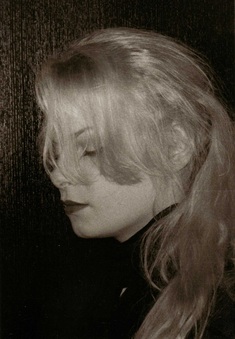 Self portrait 1990, Vienna. Self portrait 1990, Vienna. Among all of the left hand path personalities emerging in Europe today, most important is Zeena Schreck whose life’s work is dedicated to raising awareness in the West of the difference between authentic left-way mystical traditions from occult imitations. Much of her research, experiences and teachings in that field are presented in her influential book “Demons of the Flesh: The Complete Guide to Left Hand Path Sex Magic,” co-authored with Nikolas Schreck. Zeena Schreck is an American born, Berlin-based interdisciplinary artist known by the one-name moniker ZEENA. A counter-culture icon, she is known through her work as photographer, graphic artist, musician/composer, writer, animal rights activist, magician and mystic. She has practiced and taught magic and meditation for over 30 years. Her artwork stems from her mystical experience. Since childhood, Zeena was exposed to magic and sorcery through her family environment. In 1990, Zeena renounced the pseudo-satanic religion of her family in favor of finding her way to authentic Eastern left-way spiritual lineages. Today, she is a practicing Tibetan Buddhist yogini and the spiritual leader of the Sethian Liberation Movement (SLM, founded 2002). Between 1988-1993 Zeena was composer, vocalist, musician and graphic designer for the sonic magical musical project Radio Werewolf (c. 1984 to 1993). Her most recent musical release is “The Vinyl Solution-Analog Artifacts: Ritual Instrumentals and Undercover Versions” Her graphic-art project, “God Bless Charles Manson” is published in “The Manson File: Myth and Reality of an Outlaw Shaman.” Her last art Installation was“Zeena Schreck, Live From the Eye of the Storm” transmitting sacred syllables from Vajrayana, Shaktism and Sethian-Typhonian left-way tantric practices, organized by visual artist Frank Haines and presented by Performa-13. http://13.performa-arts.org/event/frank-haines-zeena-schreck Zeena has written for VICE Magazine and the Beat-oriented periodical Beatdom and is currently working on music and art projects. 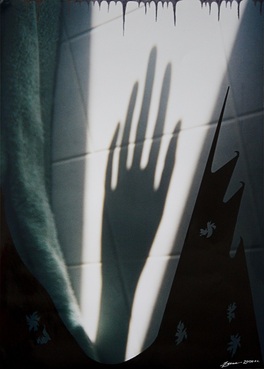 How do you define Art? There are many different types of art and reasons why people feel driven to create. In my case I use a holistic approach. There has always been an inseparable unity between my spiritual practices and my art. This holistic approach to art, exactly like the tantric techniques I practice, is when all activities and aspects of life are a part of an ongoing “work in progress” contributing to the ultimate completed work – both art and spiritual work. So this informs all activities, whether you're buying art supplies, rehearsing, eating, carrying out your personal grooming, painting, having sex, sleeping, cleaning, wrapping a package, driving, parenting, contemplating, helping a sick friend, singing, etc. – absolutely all aspects of your life are carried out in as mindful a way as possible in order that each small part contributes to the greater body of work, which you eventually shed and leave behind. Your Magnum Opus – this life. In this sense, I guess you could say I'm an inspired artist, rather than one who's perfecting or developing a particular school or type of art or an artist who's more interested in technical aspects of the craft. Inspired art is literally having the breath of divine or spiritual energies stir within you so that you are no longer your usual persona; the composite of your habits, conditioning, tastes, biases, circumstances, etc.. Instead, you are a medium for the energy which is inspiring (breathing into) you to create. In antiquity, this phenomenon was known as being inspired by a Muse. I was born with this type of inspiration to create. As early as I can remember, I had an impulse to draw and would just sit in the middle of the floor, or on the roof of our house, or blocking the stairwell just to draw. I drew on absolutely anything available in the house – often to the irritation of my parents! I was a drawing maniac. Drawing gave me a whole-body peaceful sensation and I'd get an uneasy feeling of something being “wrong” if I couldn't immediately draw when the impulse struck. I had no idea where that idea came from. Even now I can't adequately articulate it, like a dream you can't fully describe. Much later I learned that in ancient times being born with creative inspiration was considered a gift from the gods. It was thought that if you didn't honor that divine inspiration, or gift, and fulfil your destiny to create, the gods would not look favorably upon you. They considered it a slight against their generosity when humans wasted potential that not everyone's granted. So you'd forfeit your gift and that divine inspiration would be passed on to another more worthy. That's what the phrase “the muse has left” originally meant. That you waited too long and the divine inspiration was permanently taken from you. So maybe as a child I had some kind of karmic “memory” of something similar to this mythological phenomenon. As a child, I never wanted the usual things kids ask for as gifts; games, toys, dolls or popular clothes. What really got me enthused was getting art supplies and materials, particularly materials to make my own puppets with. Somewhere in storage, I still have a box of my childhood drawings and some paper puppets I made, which are quite humorous considering the influences I was exposed to growing up. I have a newspaper clipping about a junior art competition that I won at six years old. Around the same age I began creating theater pieces and ballet shows with neighborhood friends. Then my grandfather taught me how to use an old camera and I fell in love with photography. By fourteen I began training in drama and theater. I made experimental films with class-mates and wrote monologues and scenes for presentations and showcases. I watched as many foreign films as possible, what Americans considered art house films, and that spawned a growing desire to live and work in the European film industry. And then later I began musical composition. So, the point is, this creative inspiration couldn't be curtailed. In tantric Buddhist practices there are many factors that determine why a person has predispositions for certain things. So aside from this inspiration to create, there are certain organically recurring themes in much of my art. One of them, which you have noticed, is nature and animals. Another common theme I see over the years is that I like working with light and shadows, and extremes. Sometimes I work with very vibrant colors and other times I focus on only black and white. I also make use of space as an important ingredient of a work. In art terminology I'm referring to “negative space.” I do this in my music and soundscapes as well. Silence is very important, both in tone and on a canvass or in a photograph. Creating an empty space, or conveying and expansiveness, allows the viewer or listener to focus attention and open their mind to what isn't readily perceived. Negative space is important on many levels. Without the "negative space" there would be no way to reflect upon the contrast of an object in the picture, or the notes in music. Space is also very important in the spiritual meaning as well. I'm referring to the tantric understanding of emptiness. I view art as a form of communication - on many different levels and experienced differently by each artist. In my art I try communicating an inseparable circulation of energy between inner and outer worlds, the dream state and the waking state, the subtle and the coarse, the ultimate and relative realities, the mystical and ordinary, the feminine and the masculine. Art is also a reflection. Whatever I create to some degree reflects what I'm experiencing or have experienced. This is also true for any works of art throughout history. You see or hear a reflection of the tone, energy or living standards within which the artist was creating. I find that fascinating. To give you an example, as I'm writing this, a neighbor is playing his radio on the street outside of my window and a piece by Johann Sebastian Bach is attracting my attention. I notice as I listen to it how much, in addition to the talent, precision and energy of the composer, there is also an aspect of a musical time-capsule involved in which the pace and way of life from the composer's time is reflected in the composition. The viewer's, or listener's, inner world is also reflected back while taking in a work of art – and that gets back to the communication element. As an artist, you are remotely communicating with people in all different times – as Johann Sebastian Bach is with me and my neighbor at the moment! I've always found it fascinating when I see how differently one piece or work can be perceived by different people. How often it happens that you perceive one mood or feeling in a work of art and someone else perceives something totally different in the same work of art. That's because your state of mind contributes to how everything is perceived, including art. My art is also heavily inspired by dreams and mystical experiences. Those messages can be strikingly clear, with unambiguous meaning, or they can be delivered in a language of symbolism and atmosphere. All art originated as communication between the waking, spirit, and dream realms. Cave paintings, animal totem sculptures, drumming hypnotic rhythms, oracular chanting or the embodying of characters in morality plays – all of these examples of art were originally informed by mystical and oneiric experiences. Not so long ago, before our developed worlds' compulsory anthropocentric-humanist ideology, inspired art was always synonymous with mysticism, animism, shamanism, divinity, religion and magic. This is what art is for me. What is Magic for you? First of all, thank you for spelling it correctly, and for not adding a “k” at the end of magic. I should make it clear that the word “magic” has neither a positive nor negative connotation. My book Demons of the Flesh explains in detail the origins and meaning of the word magic. To give you a brief summary, magic is a method or technique. The word stems from the ancient Greek magike tekhne or “art of the magi”. From Demons of the Flesh: “The modern magician does well to remember the ancient concept of magic as an art, noticing as well that tekhne is the root word for 'technology.' Approaching magical praxis as a delicate balance of intuitive and aesthetic art form and logical and rational technology – at once an esoteric science and [what was once referred to as] the Black Arts – can allow for a more exacting approach to the development of the skill.” Along these lines, one of my first Buddhist teachers told me that, to understand the complexity and discipline of Dharma practices, it was very good that I was an artist because Dharma practices are more akin to an art than religion. He suggested that possibly the best way for me to teach was through my art. That, of course, was music to my ears! To describe what Magic is for me, it helps to provide the largely agreed upon definition of magic, cross-culturally and by many different persuasions. This excerpt from my notes at a 2009 presentation in Berlin on this subject, Magic, Media and Meditation, briefly summarizes that: “ Magic has very subjective interpretations among all the different types of practitioners. But there is a basic standard, an established commonality, which each magician accepts as the core definition. How the practitioner develops from that basis is determined by many different variables according to the different persuasions and practices of magical teachings available to each culture. The core practice of magic is: The execution of a willed intent to create change in the material world, which either defies, hastens or purifies the consequences of natural cause and effect.” 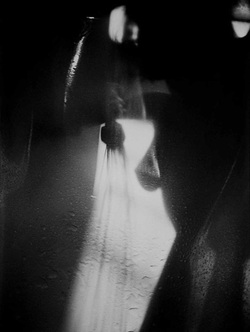 As with art, magic also is a form of communication on many obvious and subtle levels. Poor communicators have difficulty practicing magic successfully. A magician might think he's a perfectly good communicator because he talks, writes, and reads a lot. But test his communication skills with non-human beings and it becomes immediately clear whether or not he's capable of making contact with The Other. For example, those with no connection at all to animals, or who cannot even try to communicate with an animal but rather try to control it, would be poor magicians. Similarly, someone who feels silly or embarrassed trying to communicate with a non-visible entity, which is necessary to practice theurgy, invocation, prayers, spells, visualizations, and basically any kind of magic, will be a poor magician. Good communication skills, therefore, doesn't mean anyone who has a lot to say, or who continuously talks to fill gaps in conversation. On the contrary very effective magical results can come from communicating clearly but softly. Or through undisturbed emotions. Or in a language that only you and the being you're communicating with know. There is an inherent energy to everything; constantly vibrating subtle particles that form all matter. We now know that focused, directed thoughts can change the molecular structure, quality and energy of matter. So, that requires clear communication in a focused state of mind. Considering that, you can imagine how the motivation of an artist and his or her state of mind will affect the final outcome of the work. This is true for all aspects of living and dying. Not only in creating art. For example, if you go to a restaurant and have a meal prepared by a cook who is angry that he has to work late, impatient for his shift to be over, and resentful that he's working on a Saturday night when he'd rather be doing something else, you will be eating those toxic emotions through the food. There's a difference in the way food tastes when prepared by someone who loves you and is thinking loving thoughts into the meal (even if the food isn't perfectly prepared), compared to a similar meal at a busy food-chain prepared by a wage-slave cook. So our thoughts are very important when creating works of art. If we have a scattered, distracted, emotionally disturbed mind, it definitely manifests in the art. If we focus our motivation for what we hope to achieve in creating art, even if it's only thinking or repeating one word or phrase, that thought will carry into the artwork. The subject matter could even be unpleasant or disturbing (i.e., a war photographer or art and poetry created from experiences within repressive political regimes or violent families). If there's a compassionate motivation while working on the art, the effect of the compassionate thoughts will exist within the work, despite the possibly harsh appearance or tone of the finished work. Naturally, the reverse is also true: Art depicting pleasant subject matter created by an emotionally disturbed state of mind will also absorb and convey that energy. So, as a magical technique, one of the most important things for any artist to remember before beginning is to be clear about the motivation. In a very small way, it's how to begin understanding magic in the context of an ongoing, never ending practice. There is, of course, so much more to the subject of magic - too much for one interview. But that can give you a small idea of how I utilize magic in my creations. 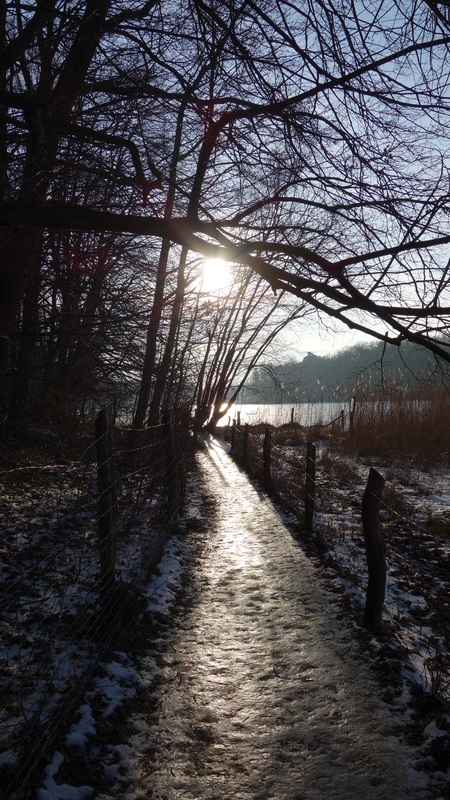 Often in your photos your subjects are landscapes or animals, why this choice? The simple answer is because that's what I like best. Being surrounded by animals and nature simply feels good, so why not do what makes you feel good? Which is why I live in the forest of Berlin and not in the city center. The most beautiful secret about Berlin is that it has the largest body of forestry of all the European capitals. To contrast that, consider one of the most famous films to come from Berlin, Metropolis, and its depiction of the industrialized worker-drones filing off to factory jobs. Well, that was a reflection of Berlin city life in the 1920s. But what the film depicted of how industrialized living affects the psyche is even more true today in any metropolis. City living creates a disempathic, anhedonic malaise that drains your vitality and strains the immune system. You have limited freedom of movement and space, so you confine yourself to a very selective and guarded personal space. Living packed into cities like human slaughterhouses compartmentalizes everything and fosters a desire to segregate. But in nature, boundaries are less defined. So you have a feeling of expansion rather than constriction. In Japan the Forest Agency created the idea of “forest bathing” and it's now officially recognized as a stress-management activity everywhere. I notice that whenever people come from the city center to visit me, they always comment on how much instantly better they feel just being around trees, lakes, wide open spaces and no traffic or streets. When I do portraits of people, taken in nature settings, there's a noticeable difference in the expressions. People are more at ease in nature. In city environments, under hectic and rushed conditions, people's expressions are much different. Even happy people display a subtle tension because they can't fully relax, anticipating the next interruption from whatever electronic devices - I can't work that way. What do you think is necessary to do Art? Patience. Self-discipline. Practice. Trust. Gratitude. A sense of humor. And what in Sanskrit is known as lila, divine creative play. A “priming of the minds canvas” is necessary. Clearing away mind-clutter in order to reach certain trance or meditative states helps you to become completely absorbed while working. If you prime yourself before beginning to work, then the art flows freely. You don't have to “think” of what to do. This expansive meditative state of mind creates a type of enthusiasm (literal meaning: an energy infusion from pure and powerful forces) which also affects the final product. So, because of the way I work, I'm very selective about who I work with and what projects I agree to. I carefully consider the energy, ability and mental state of the people I work with because that also affects the final result of the project. In choosing an apprentice or assistant, it's very important for me to work with those of a similar temperament to maintain a cohesive and conducive atmosphere during the creation. When it comes down to the task of actually doing the work, choosing those who are undistracted, have good focus, and who aren't preoccupied with trivia, impatient or waiting for the “fun” to begin. That's what's important. And this is true of all inspired artists. It's a particular temperament and a way of working whereby you have a clear vision and you can only work with people who understand that way of working. In other words, I am not what I call a “congregational artist” - someone who only engages in art to feel a warm fuzzy sense of community with “like-minded people.” You may as well join the Hare Krishnas, if that's what you're looking for. In order to create, you also need the fire in the belly. An urgent sense of time passing and impermanence. It's the knowing that if you don't seize the moment when you have it, you'll never get that shot exactly the same again; you'll never record that track exactly right without completing itnow ; you'll never film that scene exactly the same way tomorrow. The fire in the belly is the sense of urgency. That there is no time to waste. That regardless of circumstances, availability of materials resources, time, financial conditions or obstacles, artists who are inspired to create have an unstoppable fire. Being truly inspired to create means you can't say you have to wait to buy a new notebook in order to write. You will either write with whatever you have or you will find a way to make one appear for you. You won't say you need to wait until you have more time to begin painting. You make the time or you sacrifice time from meaningless activities in your life. You won't say your creative juices just aren't there without the right sexual partner in your life. You will integrate your desire for the right sexual partner into your creation. Then maybe, like Pygmalion, your Galatea will actually appear in your life. You won't be an uptight geeky nerd about what materials or instruments you use, or can't do without. If you have a fire within you to create music, you will create your own instruments. If you're truly inspired, you won't even want to drink or take drugs to stimulate creativity because you'll be intoxicated by the process of creating. When you have the proper inspiration and inner fire to create, it's like a baby that's ready to be born – it can't be put off for a more optimal time to happen. It happens to you and like being in love, you can't resist it. Have you other project in work-in-progress? I'm working on three different projects simultaneously, involving music, writing and art. Generally, I don't talk about works in progress until they are completed or near completion. But for this interview, I've included some examples from the photography project I'm working on. Consider this interview, as well as my past, present and future work, all as fragments of my Gesamtkunstwerk, or inspired-holistic art project...A work in progress. To view the original Italian version on the Words Social Forum site, click here: http://wordsocialforum.com/2014/02/21/lo-zaum-di-zeena/
|
SUPPORT FOR WORKS IN PROGRESS
Zeena is an entirely independent, self-funded artist. Her livelihood and funding for creative projects rely solely on commissioned artwork, teaching and lecturing engagements, performances and purchases of her products and music, as well as from donations from private patrons and sponsors. If you would like to pledge your support towards the production costs of current works in progress, please use the PayPal donation button at the top of page. Thank you for your support of Zeena's work! Archives
May 2024
Categories
All
|
Zeena's Bandcamp page |
Copyright ©2024 Zeena Schreck. All rights reserved.
|

